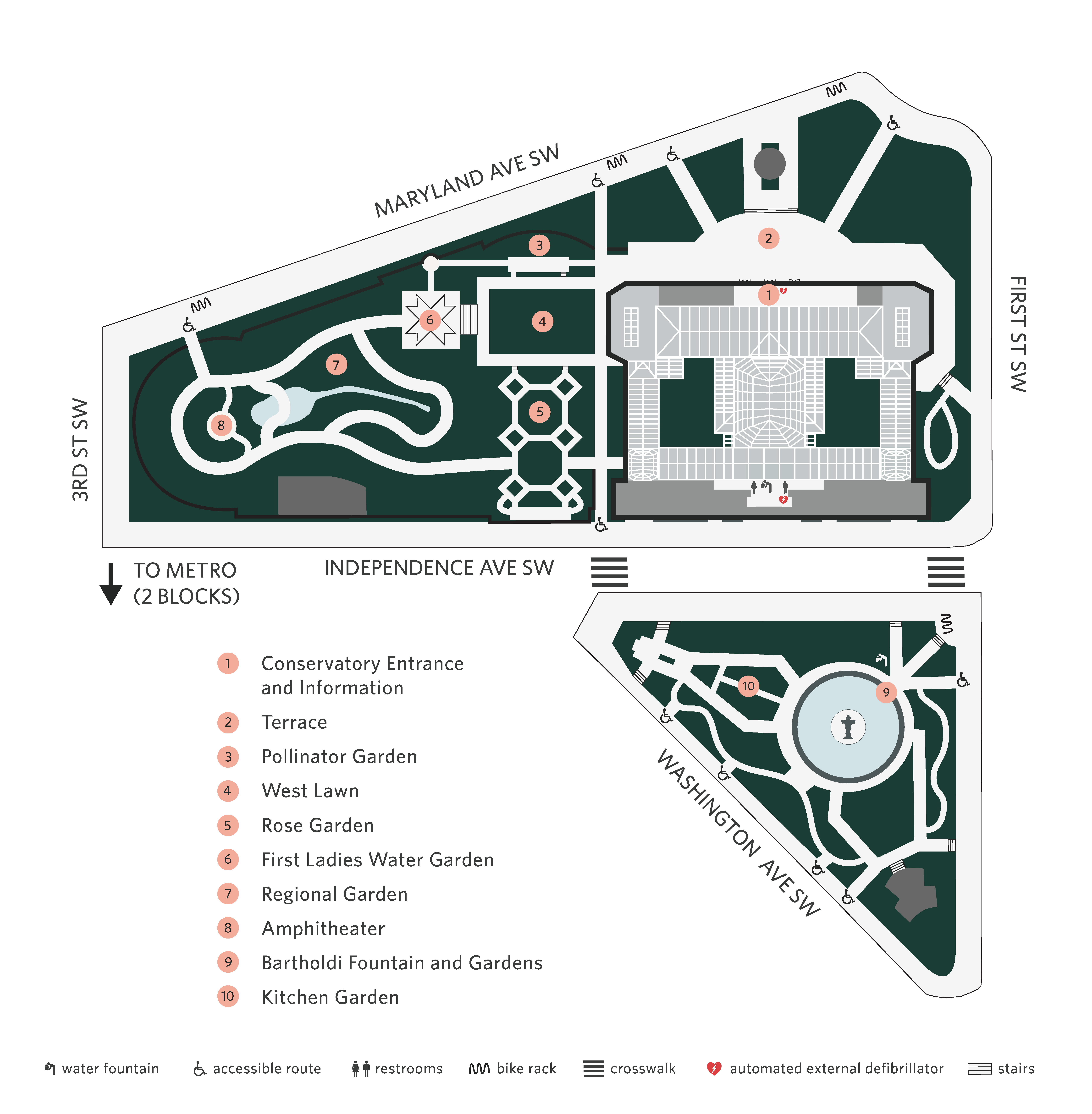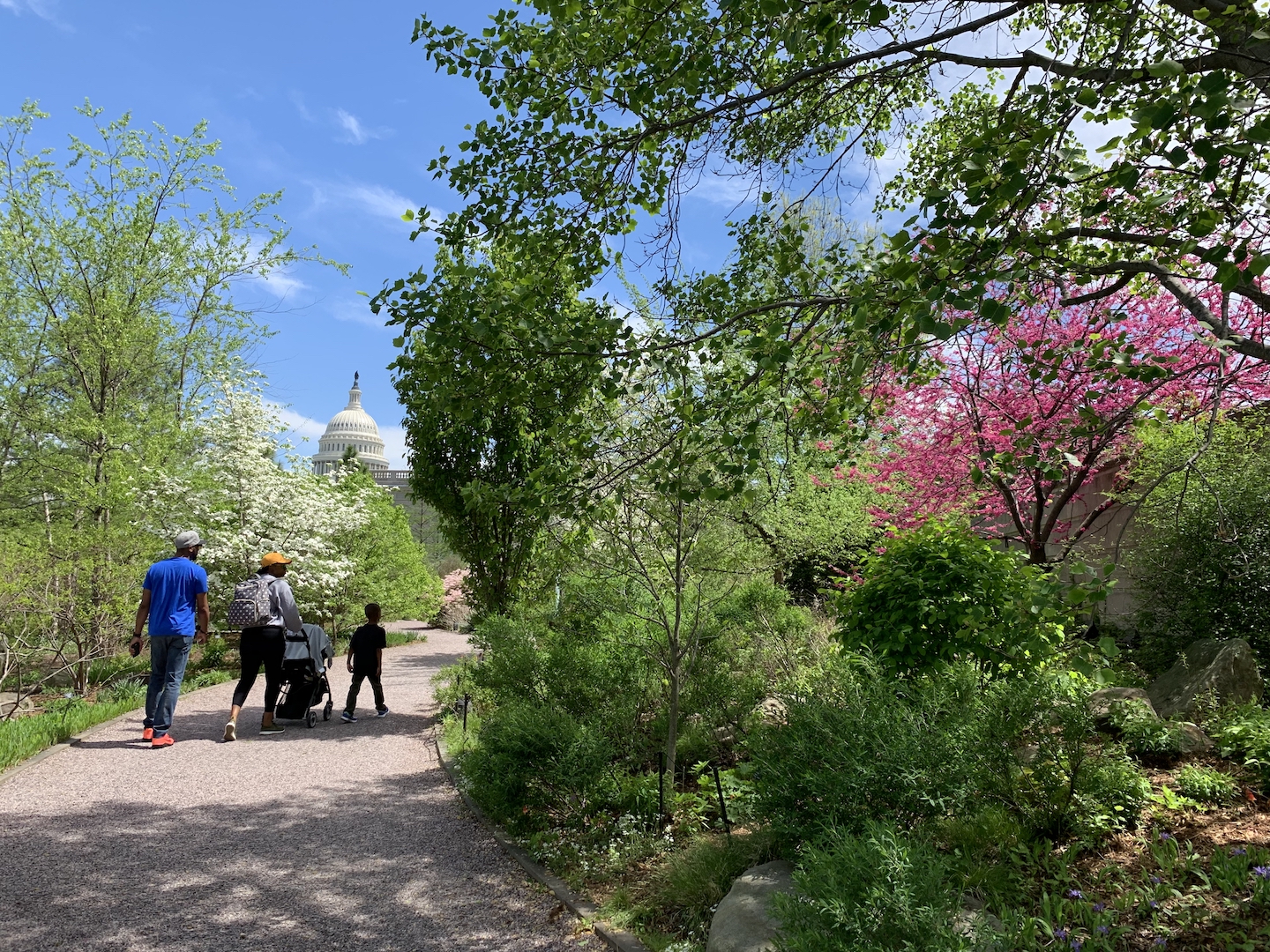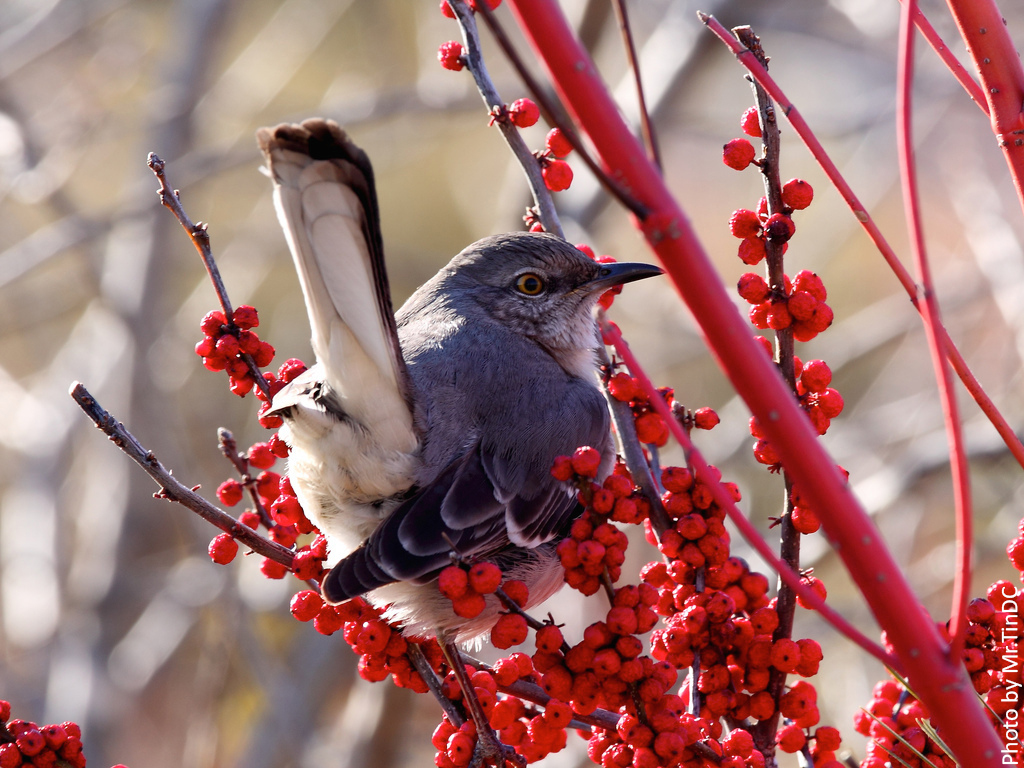Leave plenty of time to stroll through our many outdoor gardens. The outdoor gardens of the USBG, a dynamic collection of formal and naturalistic gardens, provide visitors with diverse examples of how plants can be used to provide wildlife habitat and ecosystem services while enhancing outdoor spaces, growing food, telling a story, and improving people’s lives. The three-acre gated outdoor gardens (formerly “National Garden”) draw inspiration from the environments of the Mid-Atlantic region. Conceived as an outdoor laboratory for gardening in harmony with natural ecosystems, these outdoor gardens opened in the fall of 2006.
The major features of the gated outdoor gardens are:
- The Regional Garden features Mid-Atlantic native plants selected for their form, ecological value, and horticultural qualities, highlighting the beauty of the region’s flora.
- The Rose Garden showcases rose varietals selected to thrive in the Washington, D.C. climate with minimal chemical inputs. Few plants have enjoyed such reverence and popularity across human cultures as the rose, long appreciated for its beauty, flavor, and fragrance.
- The Pollinator Garden demonstrates how gardens provide vital resources for pollinators. Pollinators, such as birds, bats, and insects, are responsible for almost a third of our food and the continuing function of our ecosystems.
- The First Ladies Water Garden recognizes contributions by the nation’s First Ladies, featuring a fountain with a detailed tile pattern.
- The West Lawn functions as a welcoming area for outdoor tours, festivals, and summer classes. The concept of formal lawns, inherited from European landscapes, is a symbol for American pride in maintained landscapes and homes, but can come at a cost. In this garden, we take an environmentally friendly approach to lawn care and pest management.
- The Amphitheater is an outdoor gathering place created with salvaged marble steps from the East Front of the U.S. Capitol. Adding a place to sit in a garden provides a place to contemplate nature and take a break from the city as well as enjoy an occasional program in this garden. It also provides a spectacular view of the U.S. Botanic Garden Conservatory and the U.S. Capitol dome.
The outdoor gardens are designed to satisfy the gardener and the garden lover. As with any garden, over time it will evolve as plants mature, compete for space, and succumb or thrive in changing conditions. From this urban oasis, experience the beauty and power of nature, while enjoying the inspiring vistas of Capitol Hill.
Other outdoor garden areas include the Terrace Gardens on the north and east side of the Conservatory with displays that provide insight or a preview to your experience throughout the garden and Bartholdi Fountain and Gardens.
EXPLORE THESE RELATED PAGES:
- Bartholdi Fountain and Gardens
- See our recommendations of native plants you can grow (wildflowers, wetland plants, plants for critters, shrubs, trees, and more!)
- Explore the National Garden's history
Garden Map

Explore the birds of the Garden
The native plants in the Regional Garden give birds food and shelter, as naturally occurring urban habitat recedes. These birds are an important part of the garden and are great indicators of its health and vitality. Check out the birds who regularly make our gardens their home »
Northern mockingbird (Mimus polyglottos) eating winterberry (Ilex verticillata) in the outdoor gardens.
History of the gated outdoor gardens

In 1986, the U.S. Congress passed and President Ronald Reagan signed legislation creating the rose as the national floral emblem for the United States. Plans then got underway to find a site to showcase roses in the nation’s capital.
The U.S. Botanic Garden was selected, and the gated outdoor gardens (then called the "National Garden") were dedicated in 1995 to commemorate the 175th anniversary of the legislation establishing the USBG. But it would take more than 10 years for the new gardens to be created.
The new garden areas opened on October 1, 2006, and stewardship was turned over to the USBG. The National Garden was made possible by a successful collaboration between the U.S. Congress, the Joint Committee on the Library, the National Fund for the U.S. Botanic Garden, the U.S. Botanic Garden, and the Architect of the Capitol.
The National Fund for the United States Botanic Garden (now called the Friends of the U.S. Botanic Garden) was established as a 501(c)3 in 1991 to fund and build the National Garden using non-federal funds. The Friends now support the educational activities of the USBG. To learn more about the Friends of the U.S. Botanic Garden, visit www.usbgfriends.org











